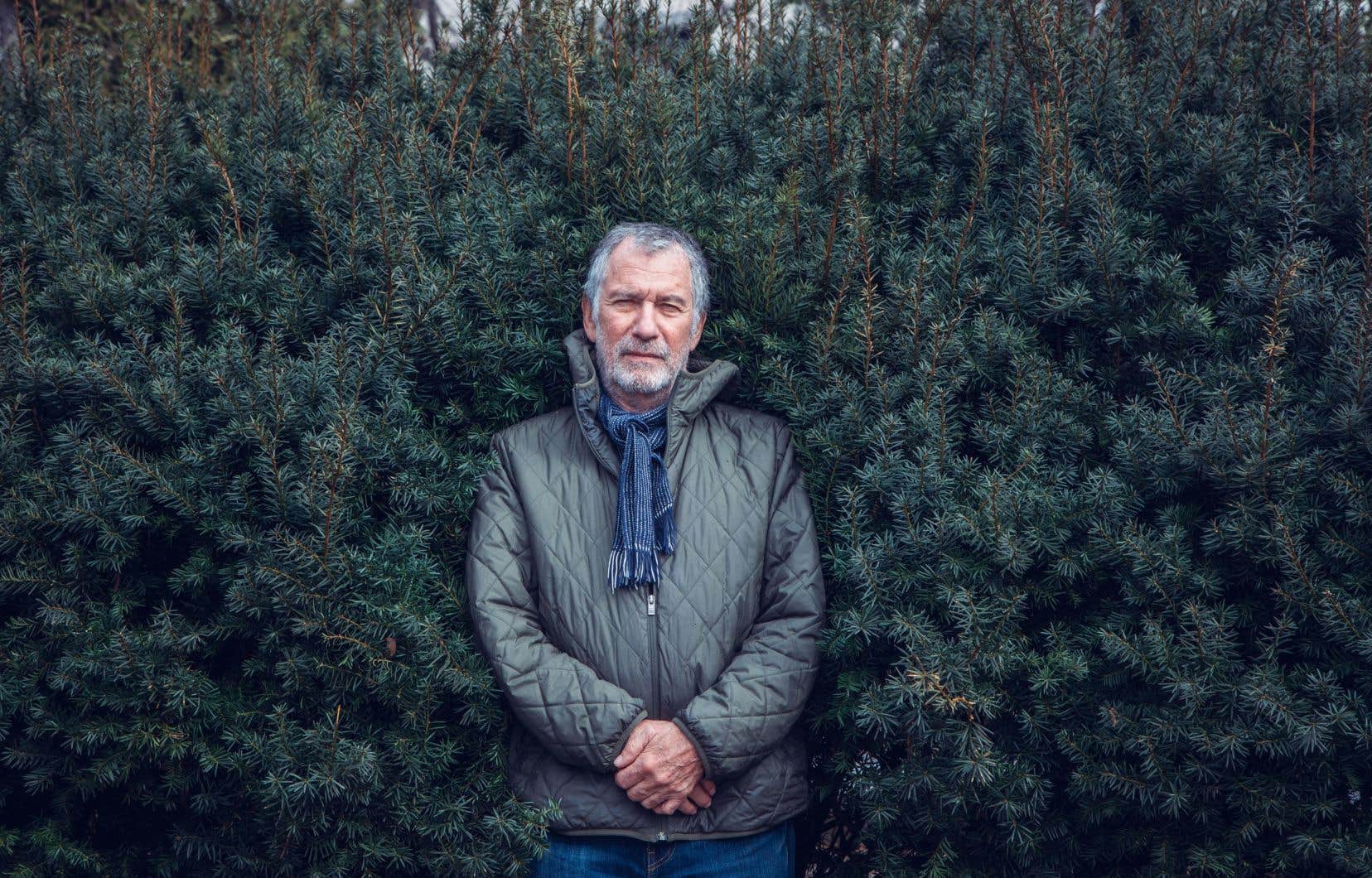Robert Morin’s previous film, 7 landscapes (2022), showed a forest and flora interacting with the different elements of nature, a setting transforming with the seasons, gradually altered by human presence. The documentary, a contemplative and minimalist thriller, offered the viewer a respite from the frantic pace, the gray concrete, the artifice of urbanity, to concentrate on the lives that unfold when his back is turned.
Boreal feast, his new work of fiction, is a continuation of the previous one. “I consider myself more of a concept artist than a filmmaker,” says the director, met in a café in Little Italy, in Montreal. “With this film, I wanted to continue the research and experience undertaken with 7 landscapes, but with animals. I wanted to create a purely cinematographic work, in that it does not include any reference to another form of art, such as theater and photography; a film that can only exist as a film, and not otherwise. »
The experimental feature film tells the story of a moose who, hit by an arrow, escapes his pursuers and finds refuge in the heart of the forest, before collapsing and giving up the ghost. First, wasps, flies, beetles and worms take over this feast. Then, crows, eagles, foxes, wolves and bears become guests in turn. Communication begins between them in the form of dance and games, while they share, give up their place, and sometimes argue. As the seasons pass and nature evolves, the deer empties, sags, changes shape, until leaving only the silhouette of its body, forever imprinted on the forest floor.
“I had this idea during a hunting trip with a friend, who reached a moose whose track we had lost. When it was found after three days, it was obviously no longer edible. Six months later, we returned to the same site to prepare for our hunt the following year. No trace of the animal remained. We agree that it’s a big beast, there! There wasn’t even a bone left. »
“The most difficult film I have made”
Recreating the slow decomposition of a 500 kilo animal proved no small task. Even if it is presented as a work of fiction – the opening and conclusion are notably scripted – the film is above all a documentary, with all that this entails of unforeseen events, DIY, disappointments and surprises.
The filming, which stretched over a period of three years, required seven different mooses. “The animals, which had all been victims of a road accident, were provided to us by the Ministry of Transport. They arrived in a state of putrefaction. This film is a lot of manipulation and tinkering with carrion. For the sake of consistency, we made seven identical plumes,” says Robert Morin.
The carcasses were placed in different sectors of the La Vérendrye wildlife reserve, accompanied by surveillance cameras ranging from the most sophisticated models to those used by hunters. Infrared lighting systems powered by dozens of marine batteries have also been installed to capture nighttime images.
“It was complicated, because I really wanted to have the full range of all the animals who would come and help themselves at the buffet. It took a long time. At first, we left too many odors, and the wolves and bears didn’t come. We covered our tracks with a trapper. Sometimes a bear or crows would eat an entire animal on their own. Not to mention all the techniques we had to use to remove batteries, change them, repair equipment damaged by animals and systems that froze in the winter; all this by snowmobile in the depths of the park. It’s the most difficult film I’ve made, with the most moments of discouragement. »
Immersion, contemplation, reflection
The filmmaker and his team nevertheless excel at creating a totally immersive experience. Exemplary sound work has been carried out so that the slightest rustle of leaves, the slightest beat of wings, the slightest hoot reaches the ears of the viewer as if they were in the heart of the forest, their senses on alert.
“Tsé, it’s still a pretty flat film. A silent camera, where the action is organic. I learned a lot from my experience on 7 landscapes, who could not only live visually. We really had to recreate the feeling of sitting on a log and watching what unfolds in front of you. This experience influenced my attitude and my determination to see my idea through to fruition. I was able to hold my own in front of producers who absolutely wanted to include narration or music. No, the goal is to sit in the woods and contemplate something, not to make a Disney documentary narrated by David Attenborough. »
Robert Morin hopes his film will give viewers the mental space to reflect on humans’ relationship with nature, and their unique status as predators. “When we witness death in nature, we understand what it really is for. It is not just used to create religions. Human beings, we are only aggressors of nature. We never give anything back, not even our corpses. It’s in our best interest to be open to what happens when we let things go. »
The film Boreal feast hits theaters on April 5.
